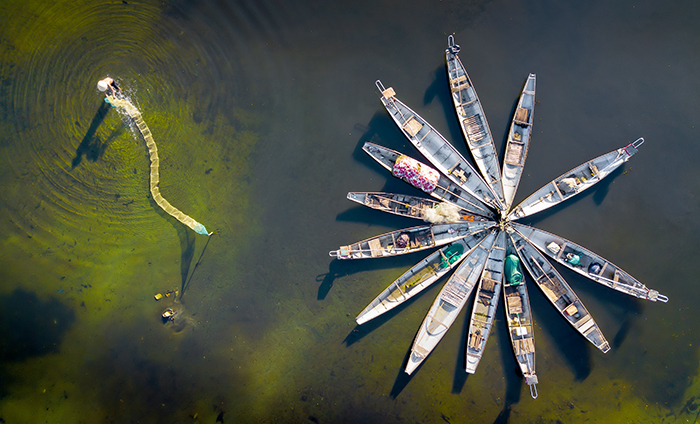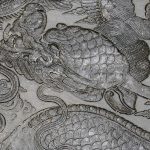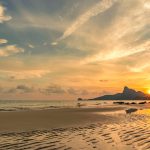Situated at the confluence of the O Lau, Bo, and Huong rivers near Hue, Tam Giang is a vast brackish lagoon covering an area of 22,000 hectares. The best time to explore this renowned lagoon is from April to August.

Located in Thua Thien Hue province, Tam Giang Lagoon is the largest lagoon system in Southeast Asia, home to 100,000 inhabitants who make ends meet by fishing. Long ago, the area was treacherous, as described in an old proverb: “Beware the Ho Dynasty scrubland, and fear Tam Giang Lagoon”. Today, Tam Giang Lagoon is described in the Thua Thien Hue Chorography as “one of the few areas in Vietnam with diverse, unique, fascinating and picturesque natural and man-made landscapes”.

Crossing Tam Giang Lagoon by boat, visitors can easily spot fishermen hard at work. They are dubbed “fish chasers” since they sail anywhere a school of fish appears. Local fishermen include indigenous people and migrants from all walks of life. Before the Tu Duc era (1829 to 1883), part of the local fishing community was looked down upon by society and had little to no civil rights. This situation changed thanks to a man named Hoang Huu Thuong. Coming from a fishing family, Mr. Thuong understood their hardships all too well. From 1837 to 1888, he earned a doctorate and served as the Minister of the Public Works Board and the Military Affairs Board. Using his status, Mr. Thuong proposed to have the local fishermen included in the country’s administrative system. This was the birth of Vong Nhi canton, comprising 13 villages across Tam Giang Lagoon. Ever since, the fishing community was given a place in society. They continue to enliven the scenery to this day.

If you want to explore the lagoon, it’s best to start very early in the morning to catch the sunrise. As the fireball emerges over the horizon, fishing boats return to Ngu My Thanh village, Quang Dien, en masse after a long night of fishing. They sell their catch at a bustling fish market, which has remained unchanged for many years. From this early morning market, specialties like shrimp, crabs, gobies, carp, and more are distributed to surrounding areas.





